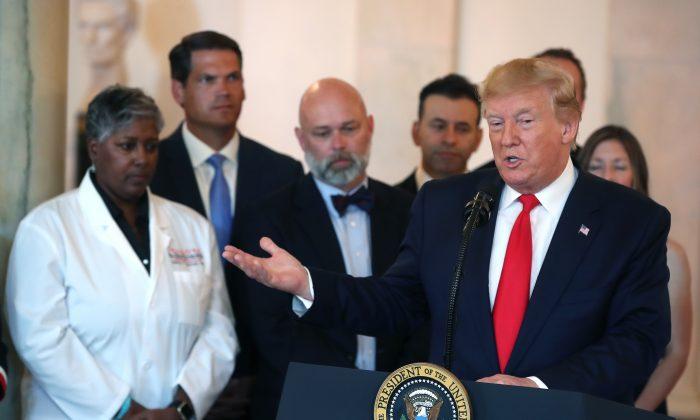Health insurance premiums are expected to decline on average next year, for the first time since 2014, the year the Affordable Care Act (ACA) went into effect.
But many are also seeing double-digit premium decreases, the largest of which are Tennessee and New Hampshire with 26.2 percent and 15.2 percent decreases respectively for the second-lowest silver plan.
Under President Donald Trump, the Department of Health and Human Services (HHS) has been giving states more freedom to experiment with different health care models to bring costs down.
One example of this is the reinsurance programs that some states have adopted for the individual marketplace. Reinsurance programs help insurers pay for the biggest claims or the sickest patients, helping them bring down rates for their other customers.
Alaska, the first state to adopt such a program, saw rates drop significantly after the first year it was implemented. It was rolled out in January 2017, and from 2017 to 2018, rates dropped by 25 percent for the lowest cost silver plans and 21.6 percent for the second lowest cost silver plans, according to CMS data. The year before, rates had risen 24.4 percent and 28.9 percent respectively.
Critics argue that premiums are going down because insurers are just starting to recover from having federal funding pulled from their budgets last year.
Under President Barack Obama, the federal government had been subsidizing certain low-income earners by paying a portion of their out-of-pocket expenses, called cost-sharing revenue payments. After Trump took office, the Department of Justice looked into the funding source and determined that the Obama administration had not created permanent funding for it under the ACA, and without the approval of additional funding from Congress, the cost-sharing revenue payments had to stop.
“We heard a lot of predictions that just didn’t turn out to be true,” Verma said to reporters via phone. “So I think collectively, all the moves that we’ve made, our new regulations, the reinsurance waivers, have all come together to lower premiums.”
On the call with reporters, Verma also touted the administration’s expansion of short-term, limited duration health insurance plans from under three months to up to three years. The administration expanded them, she explained, because they provided coverage for people whose premiums were so expensive, they might not have been able to afford insurance otherwise.







Friends Read Free